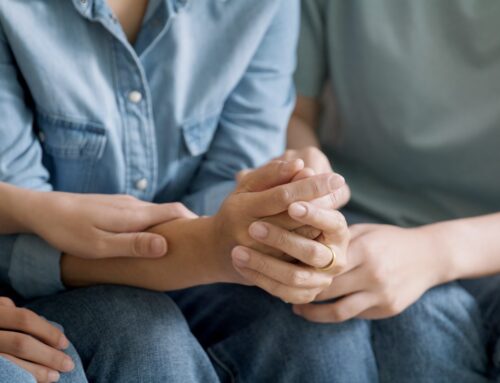Power and Control
When we think of domestic violence, we tend to think of physical abuse. In more recent years society has begun to understand the impact emotional/verbal abuse can have on a person, but we often forget that there are many ways an abusive partner or family member can exert power and control over the abused.
Many therapists will use the “Power and Control Wheel” to help their clients understand the various forms of abuse that can happen in an intimate relationship. Many clients will say that the first time they saw the Power and Control Wheel, what they were going through suddenly made sense. But what does each section of the wheel mean? And what can you do if you feel you, or someone else is in an abusive relationship?
Section by Section
1. Coercion and threats
This information, shared from Domestic Violence Services Network explains how an abuser will threaten harm to what the victim values as a way of getting what they want. The threats can include:
- Harm to the victim or to someone they care about (such as children, pets etc)
- It can involve the abuser making a threat towards themselves, for example threatening to commit suicide if the victim doesn’t cooperate.
- The abuser may tell the victim that they will take, damage or destroy valuable or sentimental items.
- The abuser may say they will expose secrets if they know the victim values certain relationships or their privacy.
There are many ways coercion and threats can play out, these are just a few examples.
2. Intimidation
Intimidation often involves violent acts and involves taking coercion and threats and acting upon them. Intimidation can be a broad range of behaviours from looks, actions and gestures to destruction of property, or physical violence towards the victim, their child(ren), family pets etc. Often those who have experienced domestic violence will say the intimidation can become so bad, that even a look causes the victim to feel instant fear and live in a state of constant anxiety. This is of course, the goal of the abuser, and helps them to exert further power and control over their victim.
3. Emotional Abuse
Some examples of emotional abuse include the following:
- Insulting comments,
- Name calling,
- Frequent attempts to belittle the victim and make them feel as though they can’t do anything right.
- Silent treatmentMany victims of domestic violence will say that the abuser would play mind games with them and that it created a situation where they felt unsure of what their reality was. This can be even more present if the abuser uses “love bombing” as a way of manipulating and controlling. Love bombing is where an abuser will shower their victim with gifts, and make over the top gestures. This can draw the victim back in and make them question or disregard the abuse they have been experiencing.Emotional abuse can be quite devastating for the victim as over time they lose their sense of self and they often find that the insults and name calling stays with them, deeply impacting their self esteem and future relationships.
4. Isolation
This tactic tends to take place gradually over a period of months and even years and involves the abuser slowly taking over control of the victims life by separating them from friends, family and their support system. They may attempt to discredit their friends and family members and claim the family/friends are “using” the victim, or they may say they feel like the victim prefers their family/friends over them in order to make the victim feel guilty. The abuser will tell the victim who they can/can’t see and what they are “allowed to do.” This can even trickle into other areas where the abuser is also controlling what they can wear, what they can read, what they can watch and so on.
In order to further separate the victim from their support system, the abuser may even move them further away from family and friends so that they can ensure the victim is not able to meet up with anyone when the abuser is not around.
This stems from the abusers fear that others will help the victim see what is happening and influence the victim to make changes in their life, for example, leaving the abuser.
This isolation further forces the victim to rely on their abuser as that is the only person left in their life. The world of the victim gets smaller and smaller and makes the idea of leaving seem even more insurmountable. All of these tactics also contribute to the victim losing their sense of self and having to rediscover who they are, what they like and so on.
5. Minimizing, Denying and Blaming
To simplify this section of the wheel, the best way to describe it is that whatever has happened, the abuser will try to convince the victim that it is not their fault. They will use excuses such as; they were drunk, or stressed at work, or that the victim themself did something to provoke whatever had happened. If the victim tries to address something that happened, the abuser may brush off their concerns, reframe what happened, or even flat out deny that it happened the way the victim is recalling. This can lead to the victim accepting responsibility for the abusers actions, believing that they in some way deserved what happened, because the abuser turns it around on the victim.
6. Using Children
Children are often the most important, precious people in a person’s life and the abuser will use the children as a way to further exercise control over the victim. The abuser may threaten to take the children away, to make up lies about the parent to have the legal system prevent a parent from seeing their children. Many abusers will use the legal system to their advantage, often forcing long, drawn out custody battles where the main goal is to disparage or criticize the victim, causing the victim intense fear of losing their children to their abuser.In the event of access, the abuser will use their time with the children to discredit the other parent, allowing them to do things, eat things etc that they know will cause a problem to the victim. For example, disrupting the children’s routine, allowing them to overindulge on things they know the other parent wouldn’t want, restricting them from using certain medications and saying to the child that “they don’t need that” and therefore implying that the other parent is doing something wrong.
Some abusers will go as far as turning their children against the victim and perpetuate their views onto the children, who will unknowingly carry out the abusers’ work. This is obviously not the children’s fault, but can leave the victim devastated at the deterioration of such an important relationship.
7. Economic Abuse
As with the other types of abuse listed above, this can take many different forms and doesn’t necessarily involve the abuser taking away the victim’s money and assets (although that can be the case for some.) Some forms economic abuse can take include the following:
- Restricting access to the money, or giving them a small allowance that is not enough, forcing the victim to have to ask for more money
- Asking the victim to account for their expenses and making them feel bad for necessary purchases and monitoring their bank accounts
- Some abusers will rack up debts in their victim’s name, which in turn affects the victims credit score and can force them into bankruptcy or further reinforce that they can’t leave and financially cope
- Preventing the victim from working or obtaining further education to better themselves, restricting their ability to make money of their own
This is made even more challenging if the victim is caring for children as well and can greatly impact many areas of the victim’s life if they do not have access to money to properly care for themselves and purchase necessities such as food, hygiene products etc or cover costs of medical, dental expenses.
8. Physical and sexual violence
Physical violence can include; hitting, punching, kicking, biting, choking and can also include damage to property, such as punching a hole in a wall, smashing something intentionally.Violence in any form is designed to further control and strike fear into the victim so that the abuser can continue to control every aspect of the victims life.
Sexual violence can also take many forms and many abusers will have little to no regard for the victim and their preferences.
What is important to note about the types of power and control listed above is that it can happen to anyone. This type of violence can occur regardless of gender, sexual orientation, race, religion, social standing, so it is important to recognize the warning signs and either seek support for yourself, or if you see this happening to someone you know, be there for them and encourage them to seek support.
In our community we are fortunate to have Domestic Violence Prevention Services (Nova Vita), they are an amazing resource and have a crisis line available for anyone who is needing immediate help. https://novavita.org/ 519.752.4357. Nova Vita also shares some information about how to support someone who is experiencing domestic violence https://novavita.org/how-to-support-someone/
If you are supporting someone who is in an abusive relationship, it’s important to understand that there are many reasons why someone won’t leave their abuser, or will return to their abuser after leaving. Having patience and supporting unconditionally and without judgment is essential.
Supporting someone in this situation can also take a toll on your own mental health, so it may be important for you to reach out for your own counselling/support, this may also help you gain insight into why your friend/loved one stays in the relationship, or returns to the relationship.
If you feel you need to talk to someone, we have a great team of mental health professionals who are here to help. If you would like more information, feel free to call us at 519.302.2300 or email reception@brantmentalhealth.com












 Sharon Walker, MSW, RSW
Sharon Walker, MSW, RSW Jordon Iorio Hons. BA, RSW
Jordon Iorio Hons. BA, RSW Christine Bibby, B.S.W., M.S.W., R.S.W.
Christine Bibby, B.S.W., M.S.W., R.S.W. Brianna Kerr, RSW
Brianna Kerr, RSW Danielle Vanderpost, RSW
Danielle Vanderpost, RSW Daniela Switzer, MA, C.PSYCH
Daniela Switzer, MA, C.PSYCH Tammy Adams
Tammy Adams Jade Bates, RMT
Jade Bates, RMT Caitlin Schneider
Caitlin Schneider Dr. Crysana Copland
Dr. Crysana Copland
 Amy Dougley
Amy Dougley Emily Kamminga
Emily Kamminga Bill Dungey, RSW
Bill Dungey, RSW



 Jessica Moore, RSW
Jessica Moore, RSW Abigail Wragge, RSW
Abigail Wragge, RSW Melanie Clucas
Melanie Clucas Ally Legault
Ally Legault Kunle Ifabiyi
Kunle Ifabiyi